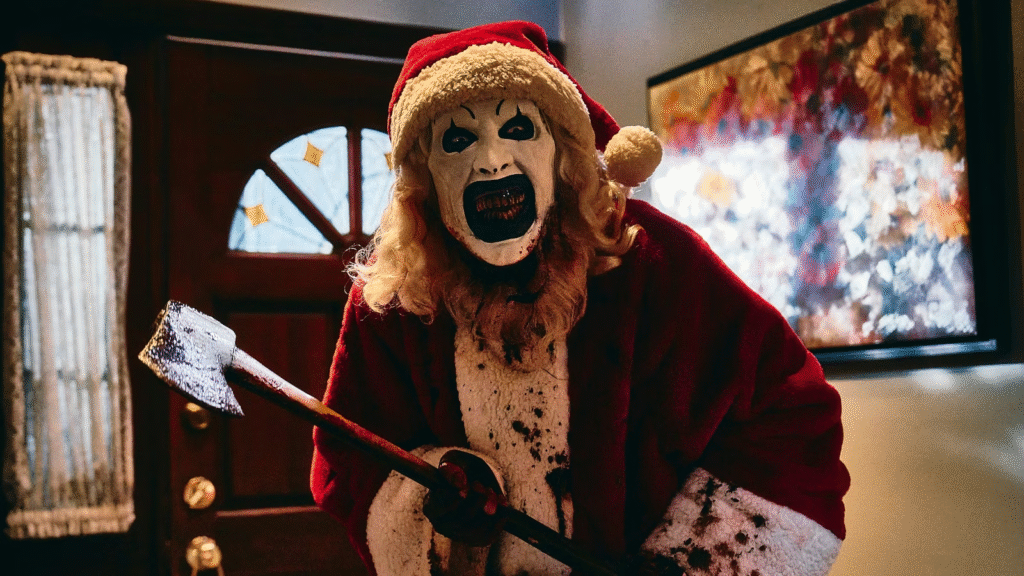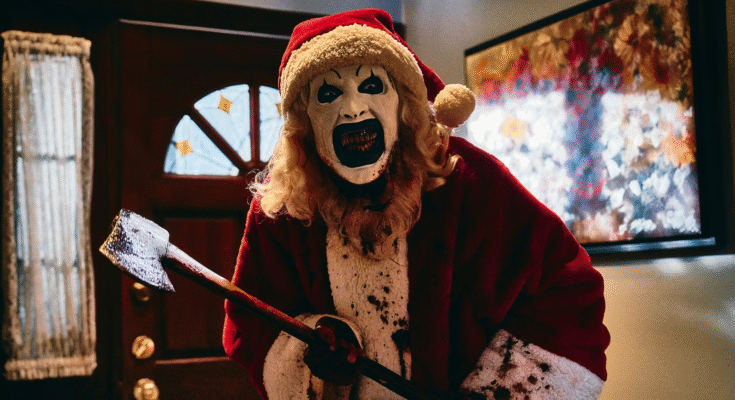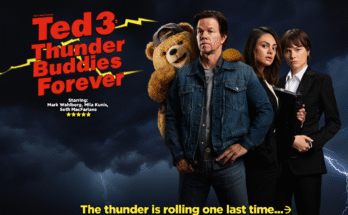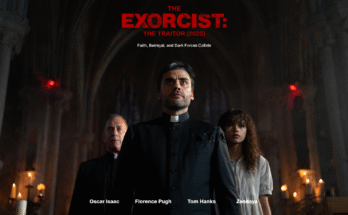When the carnival lights fade and the laughter dies, something monstrous remains. Terrifier 4 (2026) drags audiences screaming back into Art the Clown’s world — a place where the boundaries of horror, pain, and insanity blur beyond recognition. Directed once again by Damien Leone, this fourth installment doesn’t just raise the bar — it shatters it, then paints it in blood.

The film opens in the smoldering aftermath of Terrifier 3, where whispers of Art’s demise prove to be nothing more than wishful thinking. From the first frame, it’s clear: death cannot contain him. Art is reborn in grotesque fashion, a silent god of chaos stalking a small town still scarred by his previous massacres. But this time, the evil runs deeper. Something ancient has awakened with him — a force that feeds on fear itself.
Leone’s vision remains unapologetically vicious, fusing grindhouse gore with psychological dread. Every kill is both a spectacle and a statement — creative, horrifying, and disturbingly methodical. Yet amid the carnage, the director weaves an eerie beauty into the madness. The camera lingers not just on the blood, but on the silence before it falls, forcing the audience to confront anticipation as terror itself.

David Howard Thornton’s return as Art the Clown is nothing short of mesmerizing. Without a single word, he commands the screen — a grotesque ballet of menace and mischief. His performance walks a razor’s edge between comedy and carnage, reminding us that true horror lies in unpredictability. Art’s grin is no longer a mask; it’s a prophecy of suffering.
The supporting cast brings surprising emotional weight, grounding the chaos in human pain and resilience. Leone’s script digs into the mythology hinted at in earlier films, unveiling cryptic connections that tie Art’s curse to something far more cosmic — a legacy of evil that predates the clown himself. What began as slasher horror now evolves into something mythic, even apocalyptic.
Visually, Terrifier 4 is a masterclass in discomfort. Neon drenches every scene in sickly radiance; shadows hide worse things than darkness itself. Practical effects dominate, visceral and unrelenting, turning each frame into a living nightmare that feels disturbingly real. The sound design — whispers, giggles, distant carnival echoes — lingers long after the screen fades to black.

But perhaps the most terrifying element is the film’s control of tone. Leone balances absurdity with artistry, evoking both laughter and disgust in the same heartbeat. It’s a rare horror film that makes you want to look away — not because you can’t handle it, but because it feels too intimate, too wrong, too human.
By the final act, The Clown Never Dies becomes more than a tagline — it’s a curse. The ending, brutal and poetic, leaves a mark that won’t wash off. Leone’s message is clear: evil doesn’t end. It adapts, evolves, and smiles back.
With a 9.2/10 rating from early screenings, critics are calling it the most daring and disturbing entry in modern horror. Terrifier 4 doesn’t just aim to shock — it dares you to survive it.



